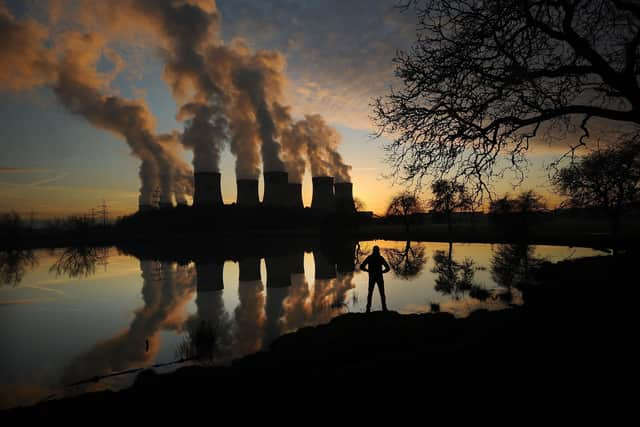Drax used wood from rare Canadian forests, investigation suggests
On Wednesday the BBC’s Panorama claimed that the company, which runs the North Yorkshire biomass power station, took more than 40,000 tonnes of wood from “old-growth” forests in North America.
These are some of the oldest living forests which its regional government says provides “unique habitats, structures and ecological functions”.
Advertisement
Hide AdAdvertisement
Hide AdIt comes ahead of Thursday’s closing date for the Government’s consultation on extending the lucrative green energy subsidies.


In 2022 the BBC’s investigative unit found that the company had obtained logging licences for “primary forests” in British Columbia which had not been significantly disturbed by human activity.
Drax at the time denied taking wood from these forests but said it would not apply for further licences.
Panorama has since obtained documents from British Columbia’s Ministry of Forests which say that the company took more than 40,000 tonnes of wood from “old-growth” forests last year.
Advertisement
Hide AdAdvertisement
Hide AdIt said that this includes an 87-hectare block of land where Drax took a quarter of the harvested wood, despite another company holding the licence to cut down the site, with Drax receiving 130 lorry-loads of whole logs from the site last winter.
This wood was subsequently turned into pellets, with some of which burned at the North Yorkshire power station.
In addition, campaign groups Conservation North, Biofuelwatch and Bulkey Valley Stewardship Coalition analysed data published by British Colombia’s government, which they said found that a high volume of logs that arrived at Drax’s pellet mills in the Canadian province came from Priority Deferral Areas – rare, at risk and irreplaceable woodland where experts recommend harvesting is deferred.
Drax said that 77 per cent of the material from its Canadian wood pellets come from sawdust and sawmill residues, adding that it had decided in October last year to stop sourcing wood from the most protected “old growth” areas, but that work to halt this in its supply chain was “ongoing”.
Advertisement
Hide AdAdvertisement
Hide AdThe company previously said in a 2017 report that old-growth and primary forests were “no-go areas”, but have since told Panorama that this document is “now obsolete”.
Drax’s current subsidy agreement with the Government, which has seen it be paid billions of taxpayers money due to the “green” classification of the process of burning biomass pellets sourced from trees, is due to end in 2027.
Ministers are currently consulting on how to extend these subsidies into the 2030s in order to give biomass companies more time to develop carbon capture technology which, if successful, could make the process carbon-neutral.
The Government is being urged not to extend these subsidies following the revelations, with more than 50 British and Canadian campaign groups writing to Claire Coutinho, the Energy Secretary, on Wednesday.
Advertisement
Hide AdAdvertisement
Hide AdA letter signed by over 165 scientists from universities across countries like the UK, US, Australia, France, Germany, Portugal and the Netherlands, was also sent to the Department for Energy Security and Net Zero (DESNZ).
Almuth Ernsting, co-director of Biofuelwatch, said: “If the UK Government goes ahead with the new subsidies they have proposed for Drax despite these new revelations, then they can drop any pretence of concern about forest and nature conservation, and delete the word ‘sustainable’ from their already deeply flawed 2023 biomass strategy.”
A Drax spokesperson said: “As a responsible business we keep our sourcing policy and practices under regular review so that that they take account of evolving forest dynamics, legislation, policy, and science.
“Fibre that Drax has sourced from publicly owned forests in British Columbia has been designated as being available to harvest legally and sustainably by the Government of British Columbia, alongside First Nations.
Advertisement
Hide AdAdvertisement
Hide Ad“We do not own forests or sawmills and are not responsible for the licensing and harvesting of forests.
“Drax sources its biomass from sawmill residues, harvesting residues, and fibre which has little other use or market value.”
A DESNZ spokesperson said: “The UK only supports biomass which complies with our strict sustainability criteria, which are in line with internationally-recognised standards.
“We regularly engage with our regulator Ofgem to ensure that our strict sustainability standards are being met before providing subsidies to these generators – this would be subject to a rigorous value for money assessment to ensure tax and bill-payer money is spent wisely.
“As set out in the biomass strategy, we will be consulting later this year on how we can go further than our peers.”